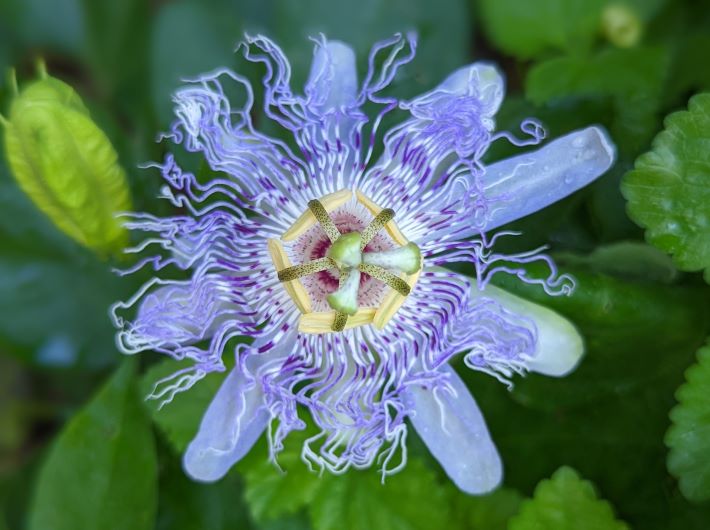
This is a maypop flower. The picture was taken a couple of weeks ago at Scratch Brewing in southern Illinois and showed up in my email this week when I asked how this year’s “crop” is looking.
Scratch Maypop is one of the best beers I’ve had this year. It is simple, but not-simple, not as sweet and juicy as passion fruit, but with a how-do-I-subscribe-this fruit flavor moderated by elusive “wheaty” character, more tart than sour. It is not as electric as the flower, which is fine.
I drank it in a brisk March day, with fruit from 2021 harvest obviously, and it tasted like summer.
Maypops (Passiflora incarnata) are native to the United States, grow wild in southern Illinois and can become invasive. Scratch harvests them in the woods surrounding the property the brewery sits as well as from vines growing on the building.
The flowers bloom from early July through mid-September. “The fruit will ripen from late August until mid October,” said co-founder Aaron Kleidon. “The fruit is hollow until it’s nearly ready. Then it turns yellow and shrivels a bit. At this point the fruit loses most of its tartness and begins to have tropical flavors. It will fall from the vine and we harvest it from the ground. We scoop out the pulp and freeze it as they all ripen over the month.”
